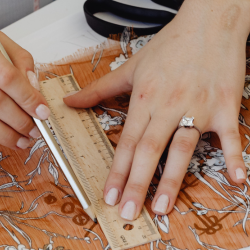Humans are cultural beings. Our culture makes us different from other creatures on this planet—culture displays unique characteristics. Our cultural upbringing may differ from others but aren’t we all individual subjects, the main characters of our life story? Also, culture is acquired over a significant time. Qualities of a good writer shows when you can create a fictional culture. There are many screen writing courses available in market for you to learn.
In filmmaking, especially in genres like science fiction and fantasy, it becomes very tricky to curate a fictional culture.
Table of Contents
What Is a Fictional Culture?
Fictional culture is a product of the creator’s imagination. Often referred to as ‘worldbuilding’ because essentially you give rise to a world of your own, creating a fictional culture would possibly entail putting in every ounce of creativity in you to build a fantastic world.
The characters of your story must portray cultural belongingness. Even though fantasy as a genre is mostly about make-believe, it is still necessary to catch the emotional nerve of your audience. How well you have invested in creating the fictional culture for the plot will determine the expressive power of the story!
How to Create a Fictional Culture?
The question is how to create a fictional culture, its essential ingredients, and what makes for a perfect fictional culture.
Since a fictional culture is primarily defined by its language, values, customs, and traditions, it is imperative to consider a source of inspiration. This inspiration could come from the human world.
Even if there are countless options, take into account some of this general writing advice for developing a fictitious culture.
Pull Inspiration from your Surroundings
To set up an entire milieu in which you will base your characters and the plot, you can draw inspiration from your surroundings. Pay attention to people’s behaviour and mannerisms. Read and research on different cultures. You can refer to real-life situations to conjure up better fictional ideas. However, be sure not to reiterate cultural stereotypes. This may backfire, and you may end up creating a cliche.
Build off your Main Character
Create your story’s setting in a way that supports the growth of your protagonist’s personality. Create a culture that supports or contrasts the aspirations, requirements, and anxieties of your primary character.
Develop a Belief System
Another indispensable element of culture is the existence of a belief system. As you may know, every culture follows a belief system that has evolved/ developed over a long time. A belief system embodies all the ideas, core values, social norms, and taboos of a culture. The audience will be able to understand and also relate to this belief system.
Create a Social Structure
Create a social system and family structure for your fictitious society. Determine your main character’s position in the social hierarchy. Whether you have a bartering economy or something more complicated, monetary systems can alter your social structure.
Construct a Technological System
Determine the level of technology in your made-up society. The entertainment, communication, and forms of transportation in your made-up world will be influenced by the technology in the story you write.
Write a Brief History
By creating a brief mythology for your made-up society, you may broaden your culture. Keep your history to the crucial details that might affect your plot, and avoid overwriting.
Synchronising
The next thing to keep in mind while building a fictional culture is synchronising your protagonist’s actions with their cultural environment. So, what you may do is first write about the main character(s) of your story and then position them in their socio-cultural context. This will also make up for a convincing storyline.
Examples of Fictional Cultures
Explore the following examples to learn more about how fictitious cultures function in fiction:
The Lord of the Rings by J.R.R. Tolkien (1954): For Middle-earth, Tolkien created a vast range of imaginary cultures. Each culture has its own history, language, and set of moral principles.
Brave New World by Aldous Huxley (1932): Aldous Huxley created a sophisticated, technologically advanced society with clear social divisions in this dystopian novel.
Dune by Frank Herbert (1965): An influential science fiction book with richly imagined societies is Dune. One of these is the culture of the Fremen, which is based on antiquated beliefs and a valuable item called the Spice Melange.
The Fifth Season by N.K. Jemisin (2015): Jemisin’s acclaimed book has a complex social system with several “use-castes” that all have a place in an earthquake-prone world with a single supercontinent.
Want to learn about screenwriting tips for creating a better fictional culture?










